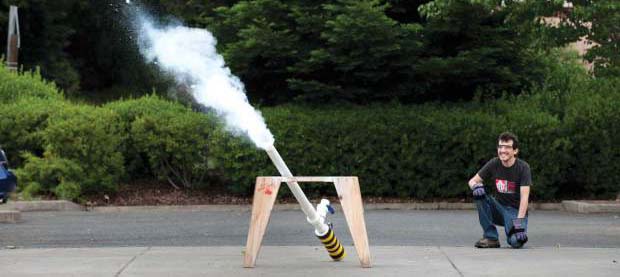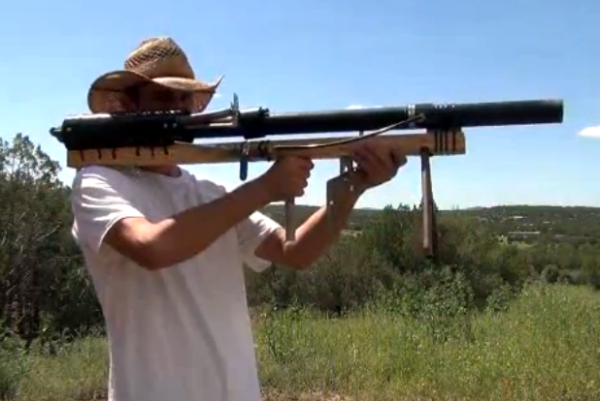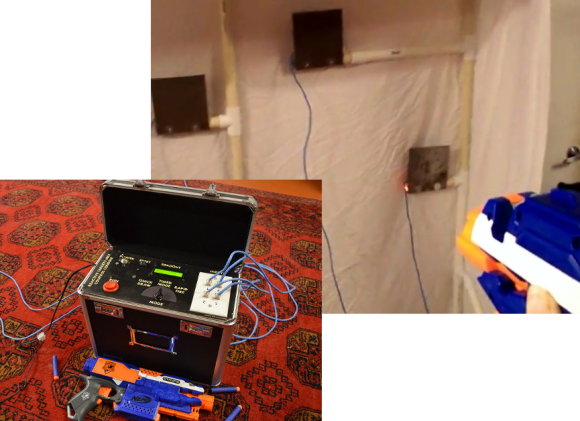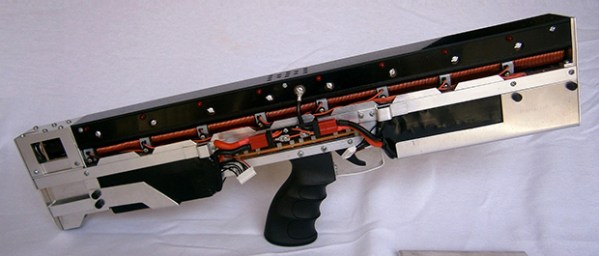
Not to be outdone with hair spray powered PVC cannons, [William] created an even cooler device: a cannon powered by dry ice.
Once dry ice is loaded into the pressure vessel, a burst disk is placed in the breech and the barrel is screwed on. The trigger isn’t very precise – the entire gun is powered by dry ice turning from a solid into a gas – but the resulting cloudy booms more than make up for any imperfections.
Despite building a cannon and using PVC as a pressure vessel, [Bill]’s project is actually quite safe. The ‘trigger’ is a burst valve made out of a disc of aluminum foil held between two sections of PVC. When the pressure rises, the aluminum foil inevitably tears, shooting whatever is in the barrel out and hopefully not into an eye. The ‘safety’ on the gun is a ball valve connected directly to the pressure vessel, and with a pressure gauge and a release valve. We’re more than confident in saying this is pretty darn safe as far as PVC cannons are concerned.



















